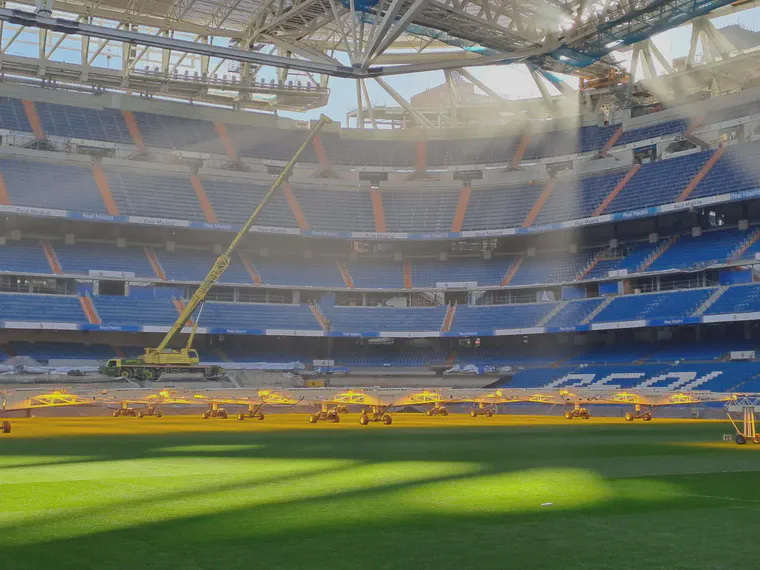The time component of soil test interpretation
Soil nutrient levels are dynamic. They change. In non-saline situations, the nutrient levels go down as the grass grows and uses some quantity of the soil nutrients.1 This is why the SLAN medium ranges seem so high, and why the MLSN method of soil test interpretation is so much more precise when making fertilizer recommendations for turfgrass. The SLAN ranges are so high because they need to account for a wide range of grass types and possible growth rates.
Grass that grows rapidly will use a lot more nutrients than will grass that grows slowly.
The football pitch at Santiago Bernabéu Stadium needs to grow at a relatively rapid rate. The quantity of nitrogen (N) supplied to the pitch will reflect that need.

A primarily fine fescue fairway in Iceland does not need to grow as much as a football pitch, and the quantity of N supplied to the fairway will reflect that too.

I don’t know the exact N rates applied at the two locations shown above, but let’s imagine there is a 20x difference in N rate—that the football pitch received 20 times more N in a year than does the fairway. That 20x difference isn’t only for N. The turf on the football pitch would require 20 times more K, 20 times more P, and so on, compared with the fairway.
The SLAN sufficiency ranges for turfgrass (see them here) consider the soil test result but don’t consider the difference in plant demand. The SLAN sufficiency ranges also don’t consider the time period of a fertilizer recommendation explicitly, although there is an implied one year validity to the interpretation when using the SLAN approach.
With MLSN, we consider both the plant demand for an element, independent of the soil test result, and we have a built-in time component for that as well. From the start, we’ve explained that the proper way to use MLSN is to consider how much of an element the grass will use.
), we emphasized the necessity of accounting for expected plant use when making fertilizer recommendations using MLSN.](/post/the-time-component-of-soil-test-interpretation/featured_hu8d29a6274b440d8648e8200a32328c57_383444_1256041a61c0e1e4f8406630549452c1.webp)
If you are using MLSN, please don’t look only at the soil test result and stop there. The point of soil testing is to make a fertilizer recommendation. In order to make a proper fertilizer recommendation using MLSN, one needs to consider plant use in addition to the soil test result.
In saline situations, without leaching, the content of many elements will increase because of addition through irrigation water. In locations where soils freeze during winter, some nutrient levels will be higher in spring than in autumn. ↩︎